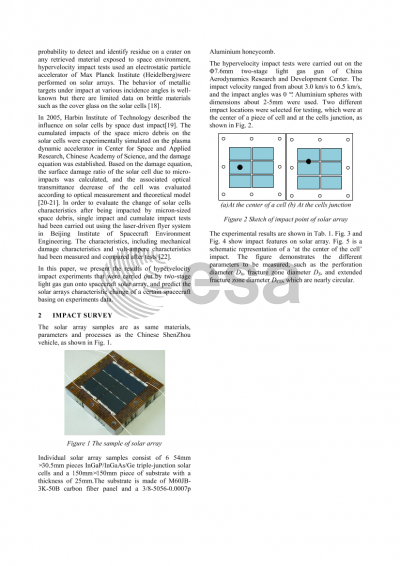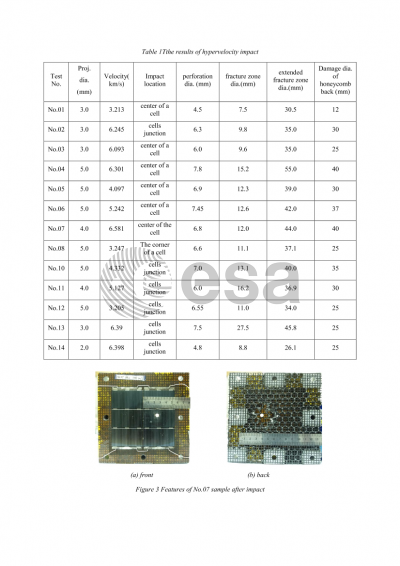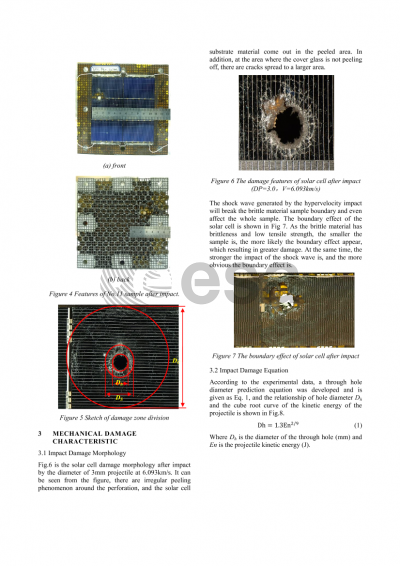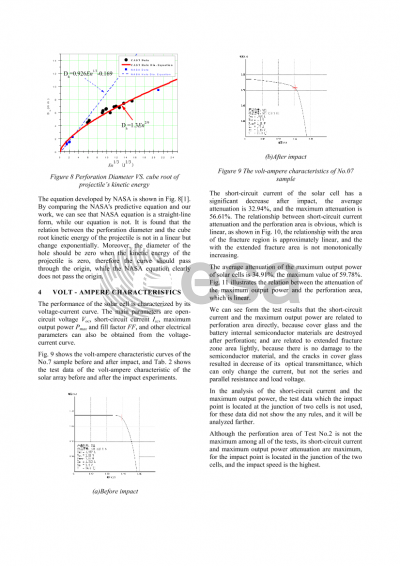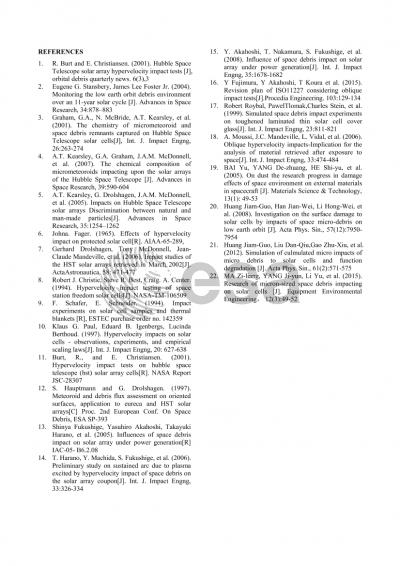Document details

Abstract
The solar arrays supply the electric power for most spacecraft. During exposure to space environment solar arrays have high hazard to be impacted by space debris, since their large area. The conductors in the solar cells may be destroyed after hypervelocity impact by space debris, which will induce short circuit, open circuit, and a change of output power, and consequently influence the missions of the spacecraft.
This paper presents the results of hypervelocity impact experiments that were carried out by two-stage light gas gun onto spacecraft solar array, and predicts the solar arrays’ life of a special spacecraft basing on experiments data.
The solar cells samples were as same materials and facture as the Chinese ShenZhou vehicle. The hypervelocity impact facility is two stage light gas gun of China Aerodynamics Research and Development Center. The impact velocity is ranged from about 3.0 km/s to 6.5 km/s, and aluminum spheres with dimensions about 2-5mm were used. The mechanical damage features were analyzed, and the perforation diameter and maximum damage diameter were measured. According to the experimental data, the function between the perforation diameter and the kinetic energy of the projectile is obtained.
The changes of the solar cell's volt ampere characteristics before and after the hypervelocity impact were analyzed, and the short circuit current, open circuit voltage, maximum output power attenuation, and the change of filling factor were obtained.
Finally, according to the solar cell hypervelocity impact test results, combined with the actual parameters of a certain orbit and space debris environment model, the life of spacecraft solar array was assessed. According to the space debris impact risk assessment of the spacecraft in the 400 km orbit with a total area of 12.24m2 solar arrays, it showed that the solar cell array power loss is 4.85% in 2016-2018.
Preview

